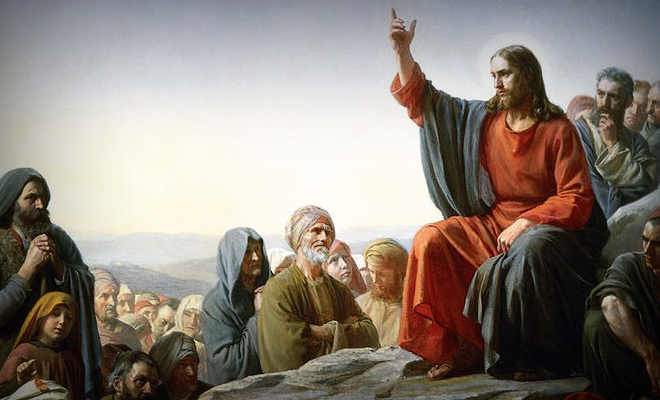We often see Jesus in the Gospels venturing out to a secluded place to pray in silence. But was that the only way He prayed? For many of us, we have grown-up with the idea that prayer is a private matter and can only be expressed in our thoughts. Jesus, on the other hand, prayed both in silence and aloud with words. When His apostles asked Him how to pray, Jesus taught them a vocal prayer, the Our Father.
[featured-image single_newwindow=”false”]The Sermon on the Mount by Carl Heinrich Bloch[/featured-image]
Even the Our Father does not express the many ways that Jesus prayed with His voice. In particular, there were 3 ways that Jesus prayed using both mind and body:
- Liturgical Prayer
- Personal Prayer
- Communal Prayer
The Catechism explains:
“Vocal prayer is an essential element of the Christian life. To his disciples, drawn by their Master’s silent prayer, Jesus teaches a vocal prayer, the Our Father. He not only prayed aloud the liturgical prayers of the synagogue but, as the Gospels show, he raised his voice to express his personal prayer, from exultant blessing of the Father to the agony of Gesthemani” (CCC 2701, emphasis added).
Jesus’ example shows us that prayer can not only remain inside us, but must also be expressed externally, both in common and in private. It may seem strange to voice our prayers in our bedroom at home, but it corresponds to our human nature. As we covered in a previous article, humans are united in body and soul and what we do with our bodies has a direct impact on our souls.
The Catechism reinforces this teaching:
“The need to involve the senses in interior prayer corresponds to a requirement of our human nature. We are body and spirit, and we experience the need to translate our feelings externally. We must pray with our whole being to give all power possible to our supplication” (CCC 2702).
It is interesting to note that the Catechism mentions to pray with our voice can give “all power possible to our supplication.” There is something about vocal prayer that adds a certain weight to our prayers. It is one thing to think something in our minds, and it is quite another to speak it aloud, especially in the presence of others. Some of my most powerful prayer experiences have been praying aloud in common.
Over the next few weeks I will dive even deeper into these three types of vocal prayer. In the process, we will look at:
- Liturgical Prayer (i.e. the Liturgy of the Hours and the Holy Sacrifice of the Mass)
- A Beginner’s Guide to Praying the Liturgy of the Hours
- Physical Breviary vs. iBreviary: How is a Person to Pray?
- The Digital Breviary: A Guide to Praying the Divine Office in a Digital World
- 5 Reasons to Pray the Divine Office Daily
- 5 Practical Ways to Prepare for Mass
- How to Actively Participate in Mass
- Personal Prayer (Praying aloud our prayers in solitude)
- Communal Prayer (Praying in common, especially in prayer groups)
In all things, we are simply imitating Jesus and the example He gave us in prayer.

